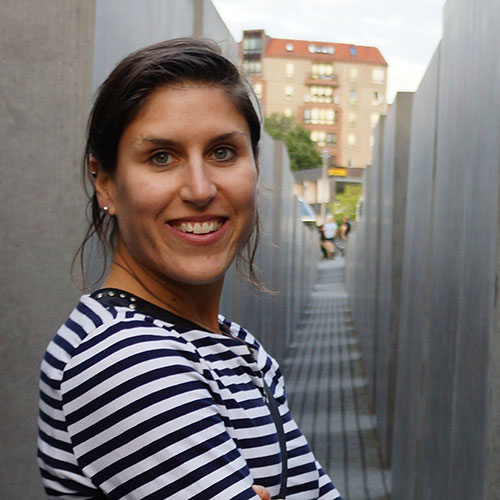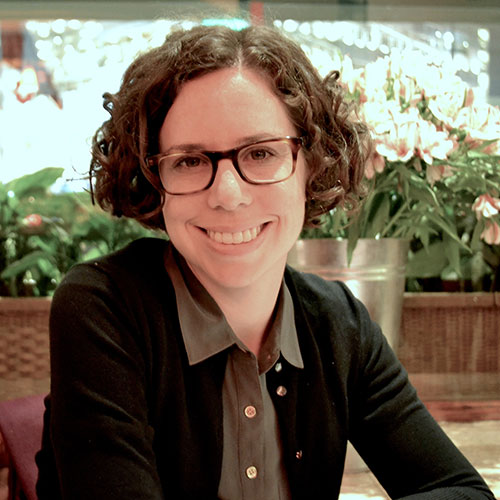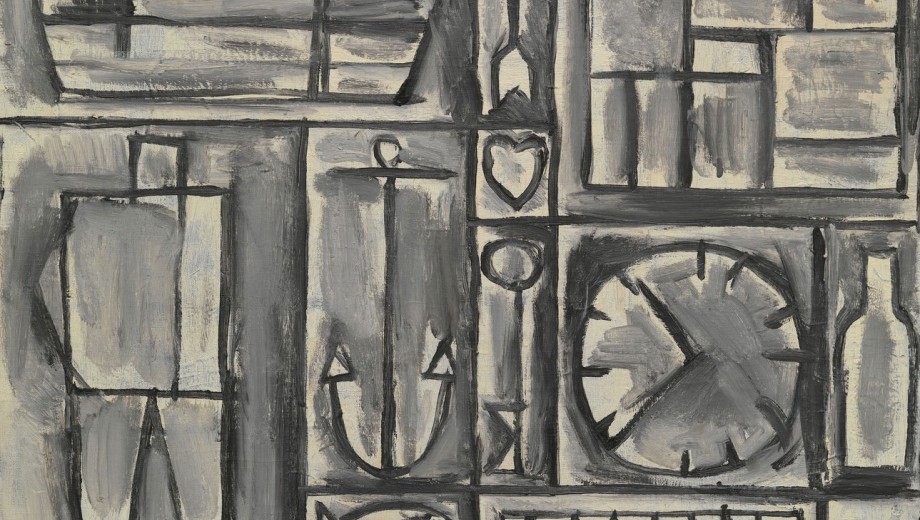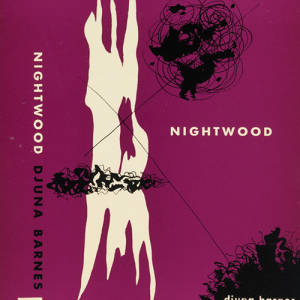Beginning as a reaction to the growing industrialization of Europe, the modernist movement started in the nineteenth century, primarily in Paris, and spread over decades, disciplines, and continents. English graduate student Rachel Kyne and art historian Megan Sullivan discuss their particular corners of modernist scholarship and how they relate to others in the field.
----
Rachel Kyne is a PhD candidate in English Language and Literature. Her dissertation is “Stuck in Time: Modernist Momentums.”

One thing that’s difficult about teaching modernism is that it’s a collection of movements, an assortment of figures and ideas that are radically contradictory and different from each other a lot of the time: dramatically different formal styles from short, compressed poems to long, stream-of-consciousness novels. We say there are certain central characteristics: an obsession with time, interest in formal experimentation, an obsession with technology, or a fascination with the changing circumstances of everyday life, but in a nonrealist mode. It makes sense once you know how it works, but otherwise it can sound very vague.
For example, I’m involved in a campus working group on modernism, which has been awesome in creating a space where people from wildly different disciplines, with startlingly different ideas of what modernism is, can talk about it. Some of the most regular participants have been from the Music Department, and they have a chronology and a way of writing cultural history by which modernism still hasn’t ended. For them modernism is an open question, whereas in literature, as early as the 1960s people were saying modernism was over.
In my research, I’m looking at long duration and continuity in time without a future: continuation without progress, I call it. Avant-gardes in the 1910s were obsessed with speed, futurity, compression, a kind of revolutionary thrusting of oneself into the future. Then came World War I and the war of the trenches, which was so unprecedented and so unexpected. They really thought that the First World War would be over in four months—at most—and literally everything just bogged down. All these dreams of the future went on hold.
I became interested in World War I as a narrative problem: How do you communicate something where you don’t have a narrative arc, where there’s no climax? How does modernism continue to develop and thrive as an ideology after World War I—and how does it deal with this historical imposition of prolonged waiting and prolonged cultural stasis while people sat in this stalemate and millions of people died?
I begin with Ford Madox Ford, because he was one of the only writers central to the prewar modernist movement to go to the war and come back. And I end with Samuel Beckett, who’s called by some “the last modernist.”
One premise of my work is that modernism has defined itself and sold itself and been treated in criticism as if people arrived and developed cubism all in a flash, for example, when in reality it’s years and years of slow, gradual change.
There are so many resonances with our own moment, because now people say, “I can’t believe how quickly everything’s changing,” and yet people also feel stuck, especially people in my generation. You look at something like the Great Recession. How do people live that sense of waiting for their life to begin?
----
 Megan Sullivan is assistant professor in Art History. Her book in progress is “Universality and Belonging: Abstract Art in South America 1934–1964.”
Megan Sullivan is assistant professor in Art History. Her book in progress is “Universality and Belonging: Abstract Art in South America 1934–1964.”
What I find so interesting about looking at modern art from Latin America is that it often reveals neglected aspects of a bigger system. It can bring to light things that underpin modernism in Europe that we don’t always focus on: colonialism and postcolonialism, or the nature of the connections between modern art and social modernity.
Modernism in Europe has a relationship to nineteenth-century industrialization, but in the early twentieth century we really don’t have an industrialized Latin America at all. So what do these forms do or mean when you don’t have a certain social or technological grounding for them? How do they change? How do formal innovations function in societies that sometimes still have pockets of feudal relationships of production?
Those are the questions that get me the most excited. My current research deals with Latin American artists who adopted forms of abstract painting that they encountered in Europe. We have to acknowledge that many modernist developments came from Europe, but then they land in a place that has a really different social structure and a different set of meanings. For example, the first chapter of my book is about a group of artists in Argentina in the 1940s, the Asociación Arte Concreto-Invención, who are trying to counter Juan Perón’s nationalist rhetoric with a Marxist idea of an international proletariat, and wanting to think about universality in art via this idea of class.
For them, even if it seems counterintuitive, the most real art was abstraction, because when you have a picture where paint is pretending to be trees and grass and sky, that’s an illusion. They said what you can touch and what you see should be exactly the same. It sounds a bit naïve now, but they wanted to create this art free of illusion that would wake people up to the real economic conditions of their world.
There was a moment when people paid so little attention to modernism outside of Europe that one felt the need to simply be an advocate. Now there’s more and more acceptance of the importance of thinking of modern and contemporary art as global phenomena, which has allowed the scholarship to become more nuanced.
Undergraduates often don’t have the same baggage and prejudices, especially students who haven’t studied much modern art. They’re much more open to Latin American modernism and thinking how it functions, and sometimes I realize that I push too hard on the European comparisons, like, “We can’t think about this unless we know Picasso.”
Maybe this is an indication of a general shift: a generation a little younger than I am not questioning as much whether Latin America could really have modern art. They engage with it on its own terms, which is exciting for me, and I think it’s going to keep affecting the way my teaching evolves.



Comments
Modernism & other creative isms
Often times academics as well as lay people think of creative isms (modernism, romanticism etc) with regards to literature, or the academic regards these moments only within their field of study. These phenomenon (isms) are not usually described as a grappling with broader circumstances by way of a preferred creative medium. Nor are the upshots of these grapplings paralleled. Nice read!